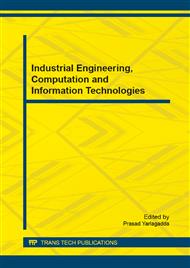p.40
p.44
p.50
p.54
p.58
p.63
p.67
p.71
p.77
PB-SVM Ensemble: A SVM Ensemble Algorithm Based on SVM
Abstract:
As one of the most popular and effective classification algorithms, Support Vector Machine (SVM) has attracted much attention in recent years. Classifiers ensemble is a research direction in machine learning and statistics, it often gives a higher classification accuracy than the single classifier. This paper proposes a new ensemble algorithm based on SVM. The proposed classification algorithm PB-SVM Ensemble consists of some SVM classifiers produced by PCAenSVM and fifty classifiers trained using Bagging, the results are combined to make the final decision on testing set using majority voting. The performance of PB-SVM Ensemble are evaluated on six datasets which are from UCI repository, Statlog or the famous research. The results of the experiment are compared with LibSVM, PCAenSVM and Bagging. PB-SVM Ensemble outperform other three algorithms in classification accuracy, and at the same time keep a higher confidence of accuracy than Bagging.
Info:
Periodical:
Pages:
58-62
Citation:
Online since:
December 2014
Authors:
Keywords:
Price:
Сopyright:
© 2015 Trans Tech Publications Ltd. All Rights Reserved
Share:
Citation:


